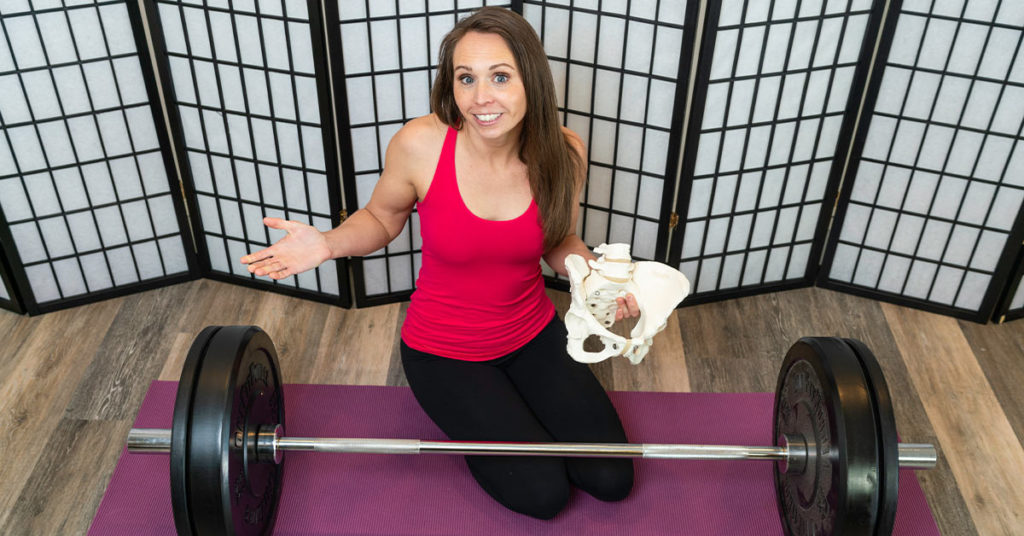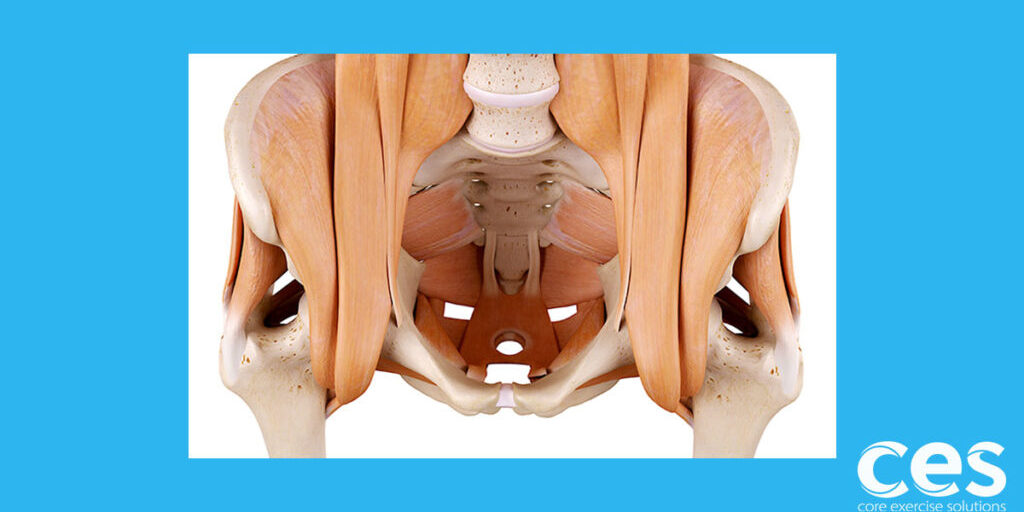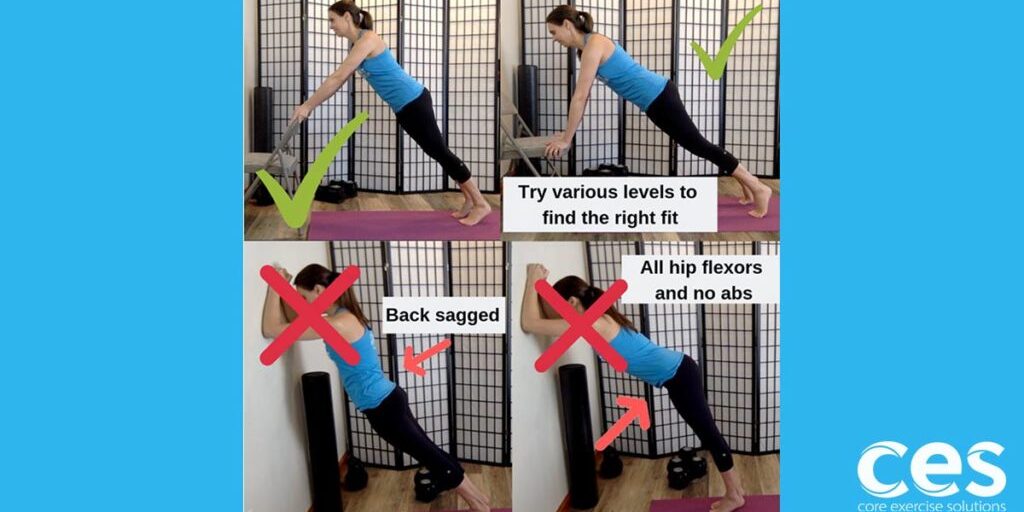The pelvic floor is an incredibly complex part of the human body. A thoughtfully-designed training program can go a long way in helping a client with pelvic organ prolapse to not only lift heavier and get stronger but also to decrease her symptoms and in some cases heal the prolapse.
Because of its central location and role in stabilizing the pelvis, the pelvic floor often compensates for weakness in other areas.
Mainstream recommendations advise women with prolapse to stay away from heavy lifting.
Don’t lift more than forty pounds.
Don’t deadlift or back squat.
Lie down for exercise.
Not only is this kind of advice misguided, it’s actually flat-out wrong and will ultimately make the prolapse worse over time. Prolapse recommendations should not be cloaked in fear of hard exercise but should come with education. Instead of saying, “lifting heavy will make prolapse worse.” Women should be taught, “Here is why lifting wrong (not heavy) will make prolapse worse, and here is what you need to know to lift correctly.” There is no unsafe exercise. Only unsafe technique.
Building strength can help to improve prolapse symptoms. With a lack of strength, everyday tasks become harder and place additional pressure on the pelvic floor and the prolapse. Following these standard recommendations may help in the beginning but where does that leave someone with prolapse three, five, even 10 years from now? Total body strength is critical for optimal pelvic floor function. Being able to deadlift, squat, and overhead press in a standing position is a must in order to function well in everyday life.
Up to 50 percent of postpartum women have prolapse.1 To put it simply, pelvic organ prolapse occurs when the organs surrounding the vagina (such as the bladder, uterus, or bowels) start to invade its space. Imagine something like a tear in the fascia or a hernia-like bulge due to excessive pressure in the abdominal cavity. This can be a result of structural weakness or damage incurred during labor. In addition to childbirth, prolonged coughing is another common cause of prolapse.
Once someone is diagnosed with pelvic organ prolapse, what are they supposed to do? Rely on others to do stuff for them? Carry their kids or their groceries for them? Ask someone to put their luggage in the overhead bin for them? Heck no! Being diagnosed with prolapse is an opportunity (and a great reason) to get stronger.
People often ask, “Why not just have surgery to fix the prolapse?” About 20 percent of women do opt to have surgery, and it can be the right choice and is life-changing for some women. For others, the surgery can make things worse than before. Reported failure rates for prolapse repairs run as high as 58 percent. According to the FDA, “the most frequent complications reported for surgical mesh devices for [pelvic organ prolapse] repair include mesh erosion through the vagina (also called exposure, extrusion or protrusion), pain, infection, bleeding, pain during sexual intercourse (dyspareunia), organ perforation, and urinary problems.” 2,3
If you’re working with a client who has pelvic organ prolapse, it’s important to understand what it is, what your client is going through, and how the right coaching can help her reach all of her strength and fitness goals and hopefully decrease the need to resort to surgery.
Pressure Regulation Is Key
When talking about strength training and lifting weights, we need to talk about pressure regulation. Cueing your client correctly will help her learn how to regulate pressure while lifting to take stress off the prolapse.
Another factor that can affect whether a prolapse improves or gets worse is pelvic floor strength and function. The mainstream advice is to “do your kegels” which can work well for some but for others, it's ineffective and simply not enough. Those who aren’t seeing improvement from doing their kegels will need a total body approach. I’ve seen a lot clients for whom isolated kegels (think-kegels at every stop light) actually made the prolapse worse. Kegels don’t need to be completely ignored, and in a lot of case they are key to recovery, but they are not the be-all-end-all solution. So, don't give up if they don't fix things!
The muscles that make up the pelvic floor can be turned on and off by the diaphragm and surrounding muscles in the pelvis and hips. The right training program can ensure that these muscles are working properly, which will optimize pelvic floor function.
5 Key Steps for Lifting Safely with Pelvic Organ Prolapse
Often, it all comes down to this: the pelvic floor must learn how to relax. When the pelvic floor is too tight, it’s can’t get a great contraction, which limits its ability to build strength.
You’re probably thinking: Shouldn’t I refer out to a pelvic floor physical therapist for this? Well, YES, and ideally you can maintain an open line of communication with the physical therapist. Coordinating your efforts with a trusted physical therapist is always a great idea. However, as the fitness coach, there are several things you can do to help your client work on relaxing her pelvic floor.
In a lot of cases, the pelvic floor may require a multifactorial approach. Coordinating with a pelvic floor physical therapist who can perform an internal exam to evaluate your client’s pelvic floor firing, and who can provide manual therapy of the soft tissue release, can be of tremendous help. If your client’s pelvic floor physical therapist isn’t also trained in orthopedic physical therapy, you may also need to coordinate with an ortho physical therapist to evaluate muscle firing, imbalances, and total-body function that can directly impact the pelvic floor.
In your role, you have an opportunity to be one of your client’s greatest sources of support, help her in this journey, and direct her to the appropriate healthcare provider when necessary.
Prolapse is scary, and it’s likely that your client is terrified about making it worse. You can validate her concerns by affirming that it’s really hard to let go and trust the body to do its thing.
Give her confidence that her body is not broken and that it is, in fact, very capable; she just needs to give it a chance to work.
Trying to “protect” the pelvic floor by constantly doing kegels or holding the pelvic floor tightly all the time will only make the prolapse worse and shut down correct pelvic floor function.4
Tightness is not always caused by holding a kegel. It can also be the result of a lack of core and hip strength. The pelvic floor is perfectly situated to compensate for this lack of strength. It acts as that helpful person that you really wish wouldn’t be so “helpful” sometimes. This is where a perfectly designed strengthening program comes in!
Step 1. Check your client’s breathing.
Optimal diaphragm function provides the foundation for optimal core and pelvic floor function.
The pelvic floor plays off the diaphragm. During the inhale breath, as the diaphragm expands downward, the pelvic floor must also relax downward. Think of it like a seesaw, one side moves the other.
This is how your client will get her pelvic floor to relax. It’s impossible to truly inhale deeply with a tight pelvic floor, so the first goal is to establish a deep breathing pattern. Have your client start in a supine or side-lying position on the floor; this is often the easiest. To progress from there, have her try deep breathing in a quadruped position, on her hands and knees, then sitting, and then standing. Standing may be the most challenging for her, as it requires the most core strength.
Breathing with Optimal Diaphragm Rib Cage Movement
The inhale is what I refer to as a “360 breathing pattern” in which the chest, sides, and back of the ribs expand as air fills the lungs, and the belly, back, and sides expand from pressure down into the abdominal cavity. The pelvic floor relaxes with the inhale pressure. (Imagine that seesaw: as the inhale breath pushes down on the diaphragm, the pelvic floor must move as well. It’s a pressure system.)
In a relaxed exhale the chest, belly, back, and sides naturally deflate and pelvic floor naturally recoils. In a forced exhale the abdominal and pelvic floor muscles contract to push the pressure out of the abdominal cavity and push air out of the lungs.
It’s important to feel the pelvic floor relaxing on the inhale and recoiling on the exhale. Think of this motion as matching the natural movement of the diaphragm. If their pelvic floor is tight, the client will not feel the inhale reach their pelvic floor, and their pelvic floor will not relax. Teaching breathing is a great insight into the pelvic floor function.
Be vigilant. Check your client’s breathing in every position. As her fitness coach, you must establish breathing patterns in all positions to be ready to exercise in all positions. Someone might be able to breathe and brace to perform a dead bug lying on their back, but as soon as they stand up, they go into a shallow breathing pattern. Or maybe they get it while standing up, but lose it once they start moving.
Step 2. Master the Breathe and Brace
Holding your breath could (but doesn’t always) hurt the pelvic floor.
Once your client has a good handle on deep breathing, it’s time to start programming some more challenging exercises that require core control. Someone with a weak core or diaphragm will have a hard time breathing while exercising and may try to hold their breath through the hardest part, which often leads to bearing down on the pelvic floor. Bearing down is detrimental for someone with prolapse. Because bearing down is the easiest way to “cheat” as a way to gain core control, avoid programming core-intensive exercises that are beyond your client’s current ability level.
Remember that as her coach you are teaching her not only how to lift, but also how to breathe. This is vital for everyday life. Depending on how strong your client is, picking up a child could actually be a fairly heavy lift for her. That’s why it’s so important that she learn good habits and patterns as she gets stronger!
The easiest cue you can give to help your client avoid bearing down is to exhale on the hard part — but there’s a catch. If she did not get a deep inhale, it sets her up to bear down on the exhale instead of getting that natural recoil of the pelvic floor. In the ideal situation, when she takes a deep inhale, the pelvic floor will almost always naturally tighten on the exhale, keeping it safe and allowing her to lift heavy without bearing down.
If she feels like she is still bearing down for the exhale, even after you cue the deep inhale, it’s a good idea to refer her to a trusted pelvic floor physical therapist who does internal biofeedback. Make sure the physical therapist has her perform some exercises standing up so she can feel it in positions other than lying on her back.
What about maxing out on a lift with prolapse? It’s possible, but there are a lot of steps to get there. You can safely hold your breath to max out pressure and keep the pelvic floor safe at the same time. Just be aware that a Valsalva is not the same as bearing down. During a valsalva, you hold your breath, maximizing intra-abdominal pressure. When done correctly there is no excessive pressure on the pelvic floor. Bearing down happens when a client doesn’t know how to coordinate pressure and breathing and instead they bear down to maximize intra-abdominal pressure.5
Step 3. Build Hip and Glute Strength
The pelvic floor often compensates for weaknesses in other muscles around the pelvis. In your initial session make sure your client doesn’t tend to clench her glutes when standing. Cue her to be mindful of this when she is brushing her teeth, washing dishes, or simply standing around. People are often unaware that they clench. Glutes clenching is most likely accompanied by clenching of the pelvic floor as well. Some of the deep rotators of the hip actually make up part of the pelvic floor. Clenching leads to tightness and weakness.
Glutes strength supports the pelvic floor, especially eccentric glute strength! Learning to deadlift and squat properly is essential. Your client should be able to feel her glutes lengthen when she sits into a squat, if not, she will either overarch her back or tuck her butt under — both of these habits negate eccentric glute length.
Once you move past the basics of squats and lunges, try a lunge rotation to work on eccentric glute strength and automatic pelvic floor firing. This exercise engages all the hip muscles!
Step 4. Check Single-Leg Strength
Clients can often get muscles to fire together but not individually. This can be troublesome for the pelvic floor when performing single-leg movement patterns in the gym and in everyday life: step-ups, single-leg squats, single-leg bridges, and any position or movement that involves a split stance such as lunges and split squats. It can even present as a challenge when walking.
The major muscles to check first include the adductors, glutes and iliacus. Your client may be great at a performing hip thrusts or is able to squeeze a ball between her knees for bridges to engage both adductors, but have her roll over onto her side and initiate movement with the adductor of the top leg and see what happens. Most people with pelvic floor dysfunction will have a weaker side. Have her do the same thing with the glutes and iliacus. The iliacus is especially important because it’s such a major controller of the hip socket. When the hips work well, so can the pelvic floor.
Some people say walking makes their prolapse feel amazing and others say it makes things worse. With clients who say it gets worse with walking, I almost always find a muscle strength discrepancy between sides. That’s a great clue. Home in on the single-leg muscle imbalances during your assessment.
Step 5. Progress specifically and with care.
Someone with prolapse will need a great coach to guide her step by step as she builds strength, to make sure every muscle surrounding the pelvic floor is performing as it should! Once she has this strength base with proper firing and coordination in place, it’s time to take her to the next level.
If her breathing system is perfect, she can trust the system as a whole to work. Nothing is off the table — box jumps, running, heavy lifting. One of my clients with prolapse recently ran the fastest half marathon of her life! Having prolapse doesn’t mean your client is broken. It doesn’t mean her dreams of lifting heavy are unattainable. It only means that she needs a great coach with a watchful eye, and maybe a few extra steps in the middle, to build a complete base of strength. Once that base is built, she can safely and systematically get stronger on any exercise she wants.
**I just had a client last week tell me her prolapse felt better after a run. Now that's what I'm talking about!! Get strong enough to do the things you want to do and nothing is off the table!
Pelvic Floor and Diastasis: What You Need to Know About Pressure Management

Join us today for this 6-part Pelvic Floor and Diastasis Video Series, absolutely free.
This course is designed for health/wellness professionals, but we encourage anyone interested in learning more about the pelvic floor and diastasis to sign up.
We don't spam or give your information to any third parties. View our Terms of Use and Privacy Policy.
Related Articles
Case Study
A client with prolapse has the goal of lifting a heavy suitcase into the overhead bin for an upcoming trip without needing to ask for help. She doesn’t have much lifting experience and now, with her prolapse diagnosis, she is scared to do anything in the gym. How do you help her go from here to being able to perform a standing overhead press with at least 30 pounds, while protecting her pelvic floor?
This course is not just focused on postpartum timelines, limitations and special considerations, you will learn the exact corrective exercises needed to progress a postpartum client with Pelvic Floor Dysfunction (leaks, tightness, and prolapse), Diastasis Recti, SI Joint Pain, and Low Back Pain back into high-intensity exercise.
References
- Costa J, Towobola B, McDowel C, Ashe R. Recurrent pelvic organ prolapse (POP) following traditional vaginal hysterectomy with or without colporrhaphy in an Irish population. The Ulster Medical Journal. 2014;83(1):16-21.
http://pubmedcentralcanada.ca/pmcc/articles/PMC3992089/ - UPDATE on Serious Complications Associated with Transvaginal Placement of Surgical Mesh for Pelvic Organ Prolapse: FDA Safety Communication. US Department of Health and Human Services. July 13, 2011.
https://www.fda.gov/medicaldevices/safety/alertsandnotices/ucm262435.htm - Dällenbach P. To mesh or not to mesh: a review of pelvic organ reconstructive surgery. International Journal of Women’s Health. 2015;7:331-343. doi:10.2147/IJWH.S71236.
https://www.ncbi.nlm.nih.gov/pubmed/27448146 - Smith MD, Coppieters MW, Hodges PW. Postural response of the pelvic floor and abdominal muscles in women with and without incontinence. Neurourology and Urodynamics. 2007; 26:377-85. https://www.ncbi.nlm.nih.gov/pubmed/17279560
- Baessler K, Metz M, and Junginger B. Valsalva versus straining: There is a distinct difference in resulting bladder neck and puborectalis muscle position. Neurourology and Urodynamics. 2017. Jan 31.
https://www.ncbi.nlm.nih.gov/pubmed/28139845










